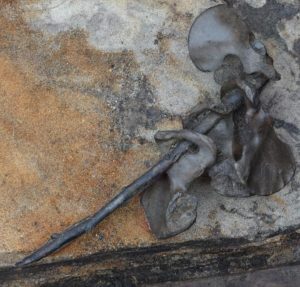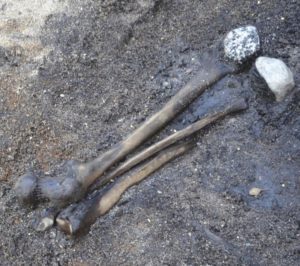
PROCEEDINGS OF THE NATIONAL ACADEMY OF SCIENCES—Archaeological excavations in Denmark shed fresh light on a fierce battle in Northern Europe in the first century AD, according to a study. The Northern expansion of the Roman Empire between first century BC and first century AD was marked by pitched battles with Germanic tribes whose ferocity was a frequent subject of Roman military lore. However, a dearth of well-preserved human remains at purported battle sites has hampered understanding of the nature of the fighters, weaponry, and battlefield practices. Mette Løvschal and colleagues report the results of archaeological excavations undertaken between 2009 and 2014 at Alken Enge wetlands in Denmark’s Illerup River Valley. Dispersed in peat and lake sediments over 75 hectares of wetland meadows, nearly 2,100 human bones and bone fragments were unearthed and radiocarbon-dated to 2 BC-AD 54. Along with weapons, such as spearheads, sword and shield fragments, iron knives, and an axe, the human remains were accompanied by ceramic pots as well as bones and bone fragments of dogs, pigs, and cattle. The human bone fragments, which represent 82 individuals, mostly adult male, bear signs of trauma before and around the time of death as well as tooth marks and fissures caused by foxes, dogs, and wolves. Together, the evidence at Alken Enge suggests large-scale armed conflict by an estimated population of around 380 young men, who sustained combat injuries, lending support to previous accounts of military prowess in northern Germania. The discovery of cut marks on bones, bone assemblages, and hip bones threaded on a stick suggests that human bones may have been collected and treated in the battle’s aftermath, hinting at the possibility of ritual in the disposal of human remains, according to the authors.
_______________________________

Four ossa coxae threaded onto a stick. PNAS
_______________________________

Find assemblages of femur, tibia and fibula, and two small stones. PNAS
_______________________________
Article Source: PNAS news release
*”Direct evidence of a large Northern European Roman period martial event and post-battle corpse manipulation,” by Mads Holst et al.
_______________________________







